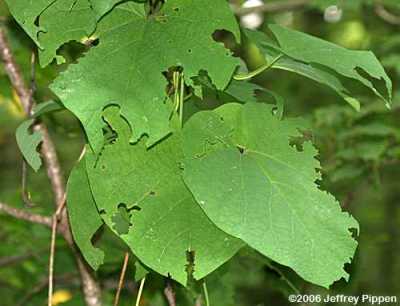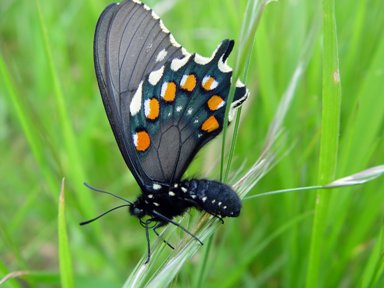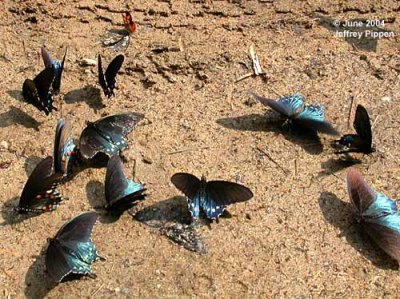Nutrition
"Bees sip honey from flowers and hum their thanks when they leave. The gaudy butterfly is sure that he flowers owe thanks to him." -Rabindranath Tagone
Battus philenor consume different things at each stage in their life cycle. We will start talking about the nutrition of Battus philenor in the larva stage. To learn more about the life cycle of Battus philenor go to Reproduction!
 The female Battus philenor lays eggs only on the pipevine plants that
are in the family Aristolochiaceae so that the larvae can start eating
the plant immediately after it hatches (Mikula,1997).Click here to learn
more about Reproduction. The female
Battus philenor lays eggs on the family Aristolochiaceae plants because
these plants contain compounds or aristolochic acids that the larvae
ingest in their bodies as a defense mechanism (Schappert, 2000).These
compounds make them deadly and distasteful to other organisms (Mikula,
1997). To learn more about the defense mechanism of Battus philenor read
Adaptations. Some plants that are in the family Aristolochiaceae
that the Battus philenor larva eats would be
Wild
Ginger, Dutchman’s pipe and knotweed (Mikula, 1997).
The female Battus philenor lays eggs only on the pipevine plants that
are in the family Aristolochiaceae so that the larvae can start eating
the plant immediately after it hatches (Mikula,1997).Click here to learn
more about Reproduction. The female
Battus philenor lays eggs on the family Aristolochiaceae plants because
these plants contain compounds or aristolochic acids that the larvae
ingest in their bodies as a defense mechanism (Schappert, 2000).These
compounds make them deadly and distasteful to other organisms (Mikula,
1997). To learn more about the defense mechanism of Battus philenor read
Adaptations. Some plants that are in the family Aristolochiaceae
that the Battus philenor larva eats would be
Wild
Ginger, Dutchman’s pipe and knotweed (Mikula, 1997).
Image courtesy of Jeffrey Pippen. The above image shows the chewed up leaves of the Pipevine (Aristolochia
macrophylla) which is the common host plant for the Battus
philenor.
There was a study done by Blankenship, B. et. al.,to show a possible
link between the offspring size variation and the host plant. They
obtained eggs from a population in Texas and a population in California.
The California population of Battus philenor larvae are larger
than than Texas population. Three types of host plants were used to
examine the role the host plant plays in size variation. The results
showed that host plant had no effect on the size of the different
population. The study suggests that the California population was larger
through development (Blankenship, 2010). .jpg)
When the larvae turn into adults, they know longer eat plant leaves but instead feed on nectar. The adults can be found nectaring on honeysuckle, orchids and azalea (Mikula, 1997). The adult Battus philenor are also attracted to Dutchman’s pipe, knotweed, pipevine and snakeroot (Mikula, 1997). The butterfly obtains the nectar by using their proboscis. To learn more about the proboscis of Battus philenor go to the Adaptations page.
Image courtesy of Wikimedia Commons. The picture to the right shows Battus philenor getting nectar from a flower using the proboscis.
The nectar from a flower alone does not have enough nutrients for a butterfly to survive (Wilson, 2008). In order to get enough nutrients and minerals, the butterfly requires other nutrients from sources like water, urine or dung (Wilson, 2008). Butterflies can drink from very shallow, still puddles (Wilson, 2008). To obtain water and nutrients, Battus philenor uses a technique called puddling (fcps.edu). Puddling is when a butterfly is near a puddle and then flies away and returns (Wilson, 2008). The butterfly does this in hope of disturbing the water and bringing minerals up the surface of the water (Wilson, 2008). Battus philenor obtains water the same way it does nectar through the proboscis.
Image courtesy of Jeffrey Pippen. The pictures above show Battus philenor getting nutrients from the damp soil using its proboscis. In the picture on the left there is an orange foreign butterfly that joined Battus philenor.
To find out how Battus philenor reproduce, go to Reproduction.
.jpg)
.jpg)


.jpg)